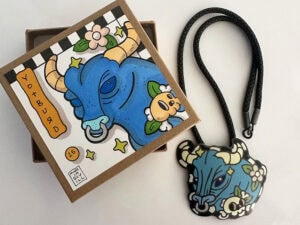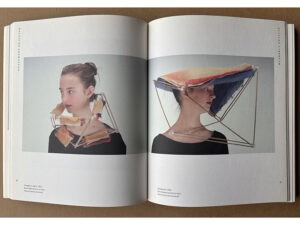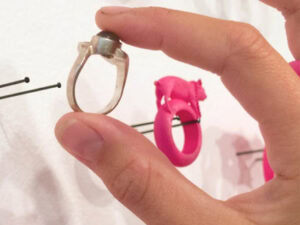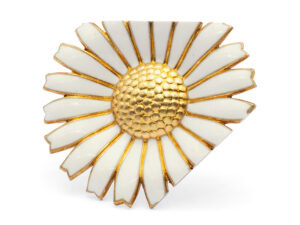The brooch belongs to me! I claim ownership over it with insistence! It was given to me by Sophie as part of a jewelry swap, at a delicate moment in my life, when my health, or rather the health of my right breast, was not at its peak.
When I wear it, I am wearing this third breast in the middle of my very upright torso.
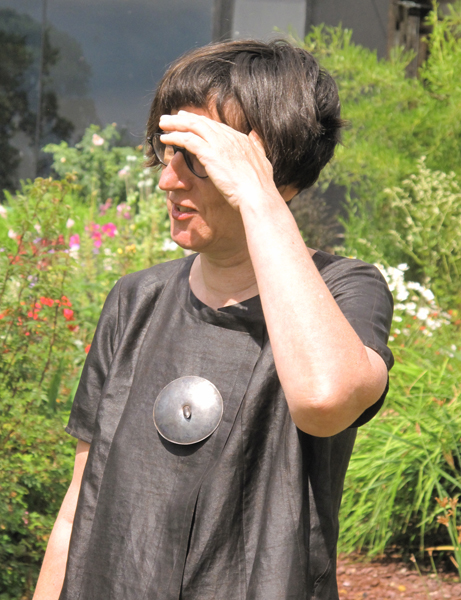
Is this the cause of my puzzlement? Am I, despite myself, confronted to jewelry’s ancestral symbolic powers … as talisman? As amulet? As foil to evil forces, giving strength to those who wear it? Given my robust taste for science and logic, I should not adhere to this slippery line of thought and yet this “early work,” conceived soon after Sophie’s graduation from the decorative arts school in Geneva, carries some of that ancient magic.
Like those objects one sees under glass in museums for folk or popular art—as one designates art that finds its source in the rural world—my brooch hints at symbols and beliefs from a world of customs and traditions that have almost disappeared, or, at the very least, are being thoroughly transformed. The brooch’s folk art status is affiliated to the working class, producer of rich and varied forms that flaunt their lack of aesthetic inhibition and obey different rules than bourgeois art. Sophie is no stranger to these museums; she visits them to admire the objects on display, listen to them, look at them, and let herself be inspired by their unbridled nature and obviousness.
If the picture on the right lets you see the brooch, in order to understand the minuscule details that make it what it is, you’ll need to take hold of it, caress it, twirl an excessively pointy nipple that sometimes scrapes and jams, and gives hollow sounds, neither tender nor soft, like something obstinate, stiff, and austere.
The jewelry that Sophie makes is often wrought from multiple elements using the sonorous techniques of blacksmithing. A number of them feed off their own sounds. The intimacy of these tones, and the resonance they find in me is the subject of these few lines. The hardest part was to write them.

